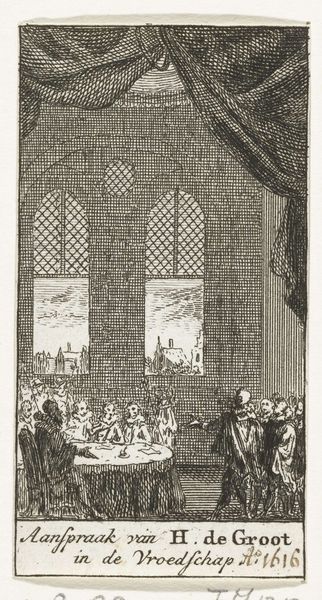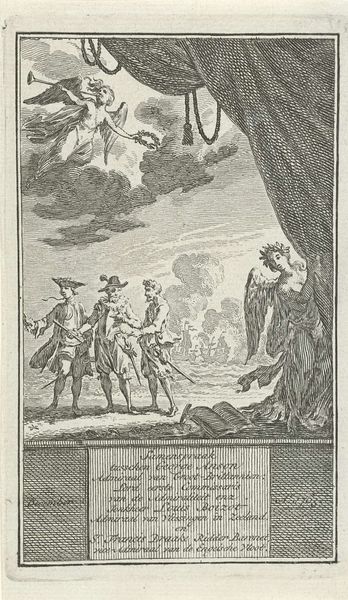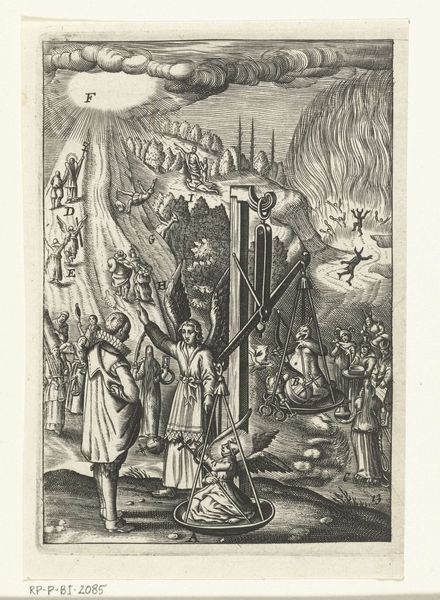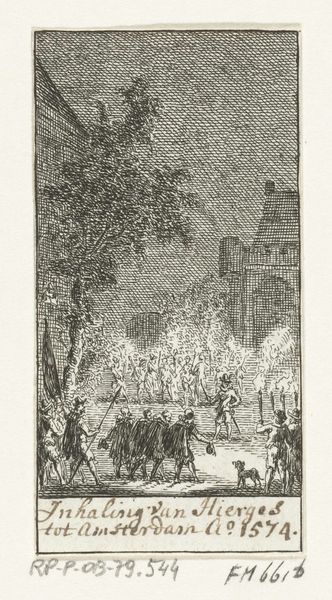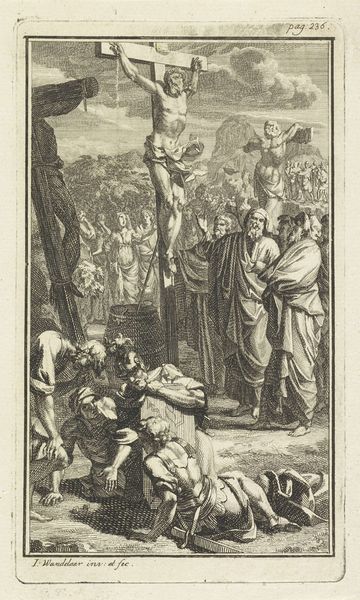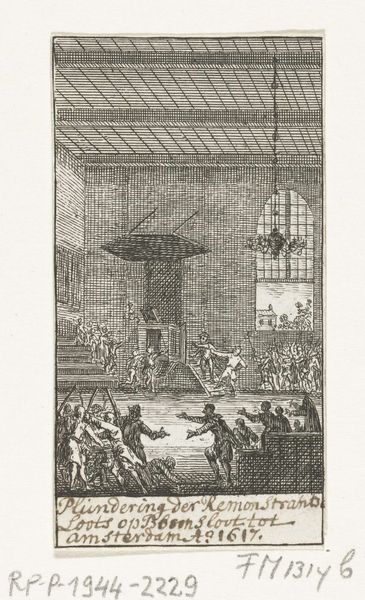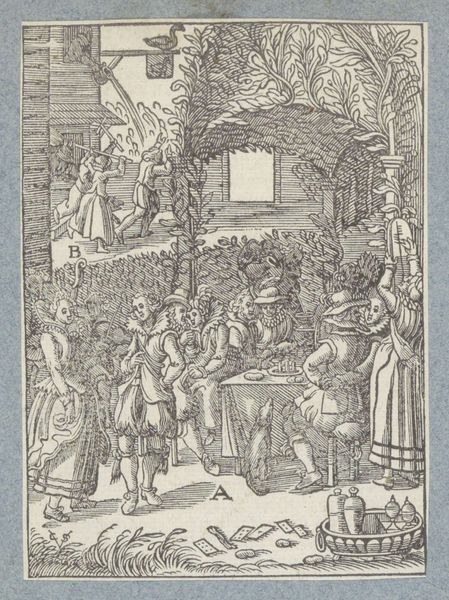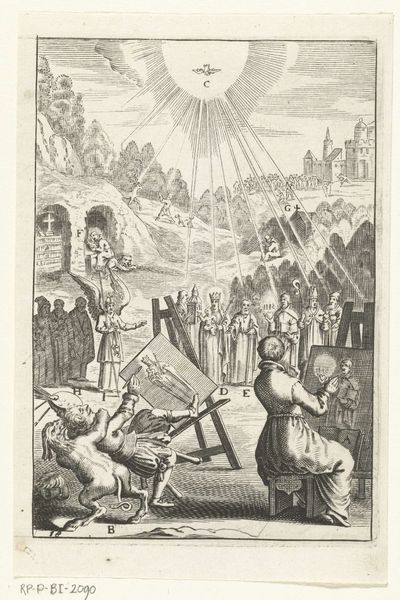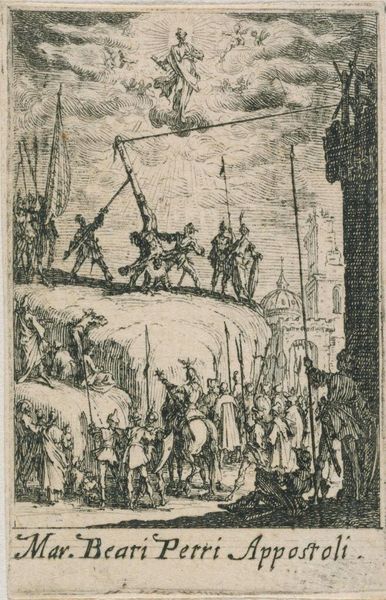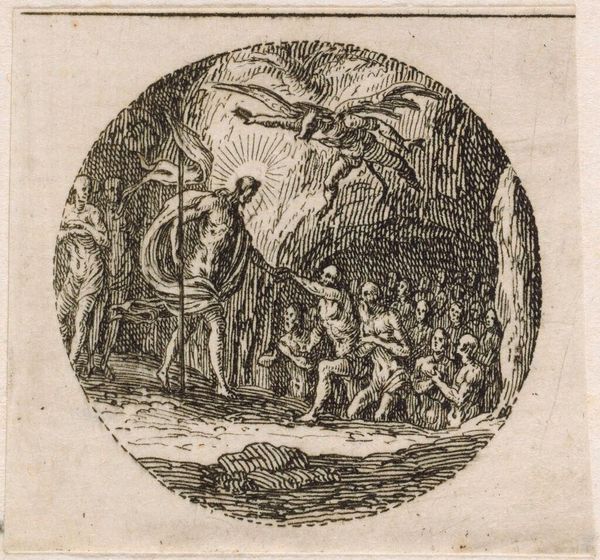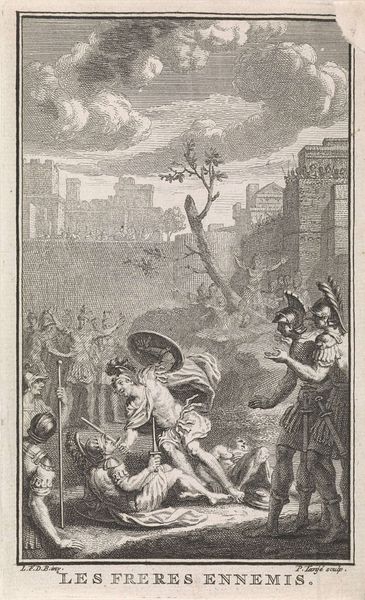
#
aged paper
#
pen drawing
#
pen sketch
#
old engraving style
#
personal sketchbook
#
sketchwork
#
pen-ink sketch
#
pen work
#
sketchbook drawing
#
sketchbook art
Dimensions: height 80 mm, width 41 mm
Copyright: Rijks Museum: Open Domain
Editor: So, this is "Leicester's maaltijd op het stadhuis te Amsterdam, 1587," a pen drawing from between 1722 and 1784 by Simon Fokke. It depicts a banquet scene. The detail is incredible for a pen drawing, but it also feels staged, almost theatrical. What catches your eye? Curator: The theatricality you observed is insightful. Look how the artist frames the scene with the heavy drapes. It's less about a faithful representation of the event itself, and more about crafting a specific image for public consumption. The image, commissioned well after the actual event in 1587, reminds viewers about Leicester's controversial attempt to govern the Netherlands. Editor: Controversial how? Curator: Robert Dudley, the Earl of Leicester, was sent by Queen Elizabeth I to aid the Dutch in their revolt against Spain. The Dutch, in gratitude, offered him the position of Governor-General. But this raised many political tensions, he was seen as power-hungry and not acting in the best interest of their Republic. See how crowded and somewhat indistinct the figures at the table are? Editor: I do. Are you saying their depiction is less about celebrating community and more about conveying that political unease and skepticism? Curator: Precisely. The artist seems to be carefully managing how the public remembers and interprets this historical moment. The drawing serves almost as a piece of political propaganda, subtly influencing public opinion, even decades after the fact. The stage is set, but not everyone is celebrating the play. Editor: Wow, I never would have thought of a pen drawing as a political statement. It makes me rethink how even seemingly simple sketches can reflect the complexities of power and perception. Thanks! Curator: And it underscores the important role artists play in shaping collective memory and navigating turbulent political landscapes. Always ask: Whose story is being told, and why?
Comments
No comments
Be the first to comment and join the conversation on the ultimate creative platform.
